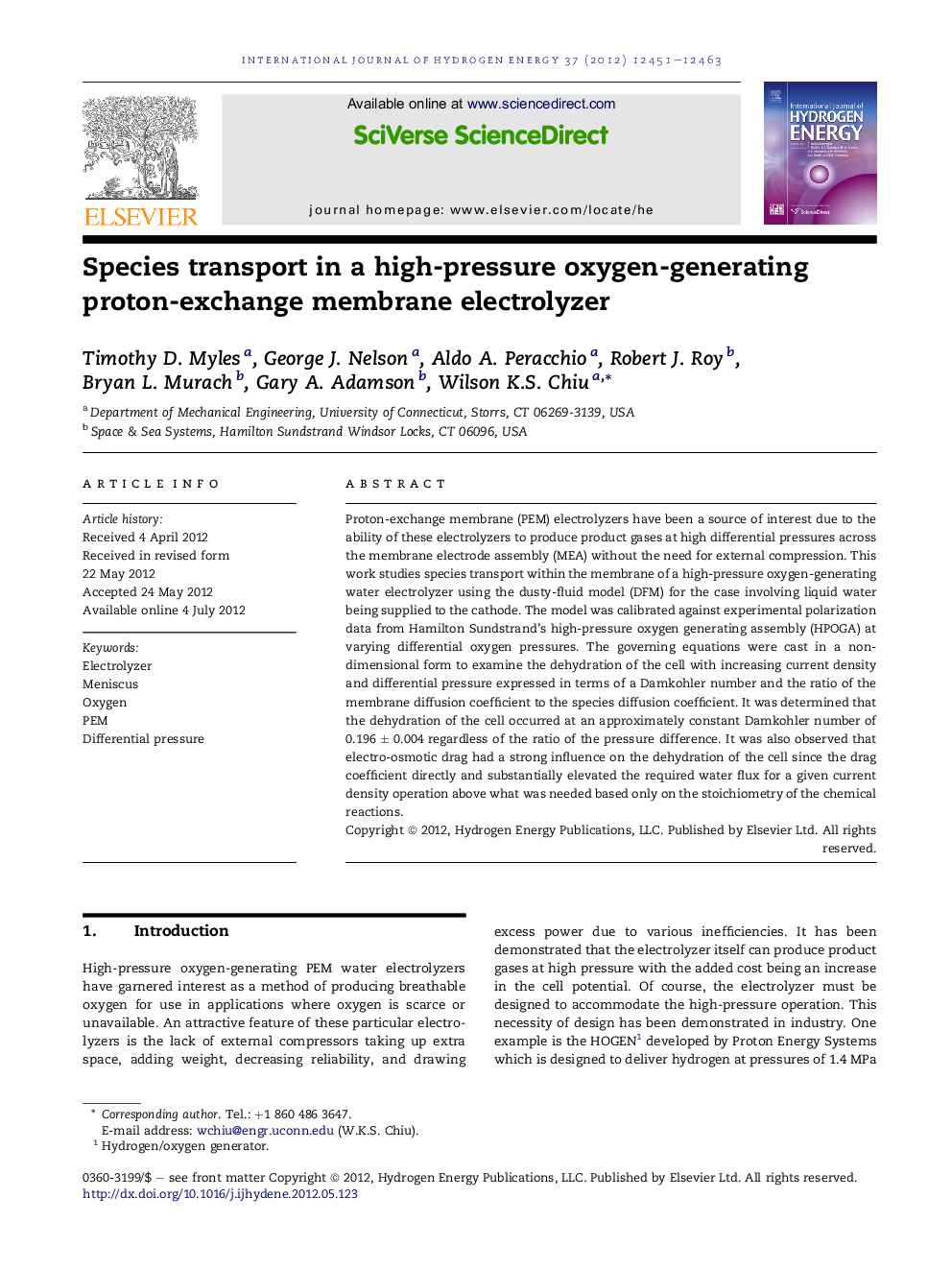| Article ID | Journal | Published Year | Pages | File Type |
|---|---|---|---|---|
| 1271082 | International Journal of Hydrogen Energy | 2012 | 13 Pages |
Proton-exchange membrane (PEM) electrolyzers have been a source of interest due to the ability of these electrolyzers to produce product gases at high differential pressures across the membrane electrode assembly (MEA) without the need for external compression. This work studies species transport within the membrane of a high-pressure oxygen-generating water electrolyzer using the dusty-fluid model (DFM) for the case involving liquid water being supplied to the cathode. The model was calibrated against experimental polarization data from Hamilton Sundstrand's high-pressure oxygen generating assembly (HPOGA) at varying differential oxygen pressures. The governing equations were cast in a non-dimensional form to examine the dehydration of the cell with increasing current density and differential pressure expressed in terms of a Damkohler number and the ratio of the membrane diffusion coefficient to the species diffusion coefficient. It was determined that the dehydration of the cell occurred at an approximately constant Damkohler number of 0.196 ± 0.004 regardless of the ratio of the pressure difference. It was also observed that electro-osmotic drag had a strong influence on the dehydration of the cell since the drag coefficient directly and substantially elevated the required water flux for a given current density operation above what was needed based only on the stoichiometry of the chemical reactions.
► Water transport in a high pressure oxygen generating water electrolyzer was investigated. ► The Dusty Fluid Model governing equations were cast in non-dimensional form to study cell dehydration. ► A pressure sustaining meniscus in the membrane pore can support the high pressure. ► Dehydration was caused by membrane dryout at the anode side, and can be predicted by the Damkohler number. ► Electro-osmotic drag has a significant effect on the dehydration of the system.
